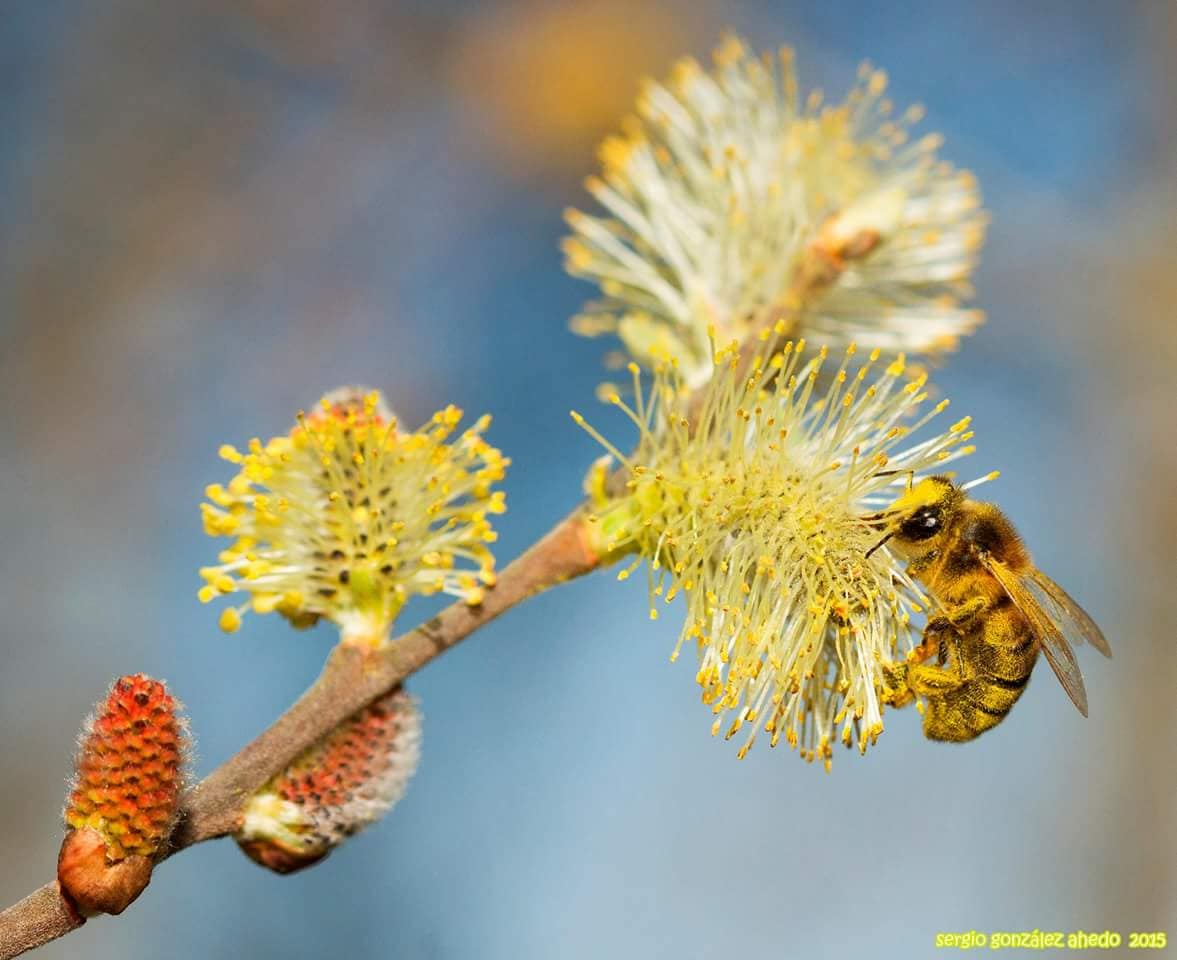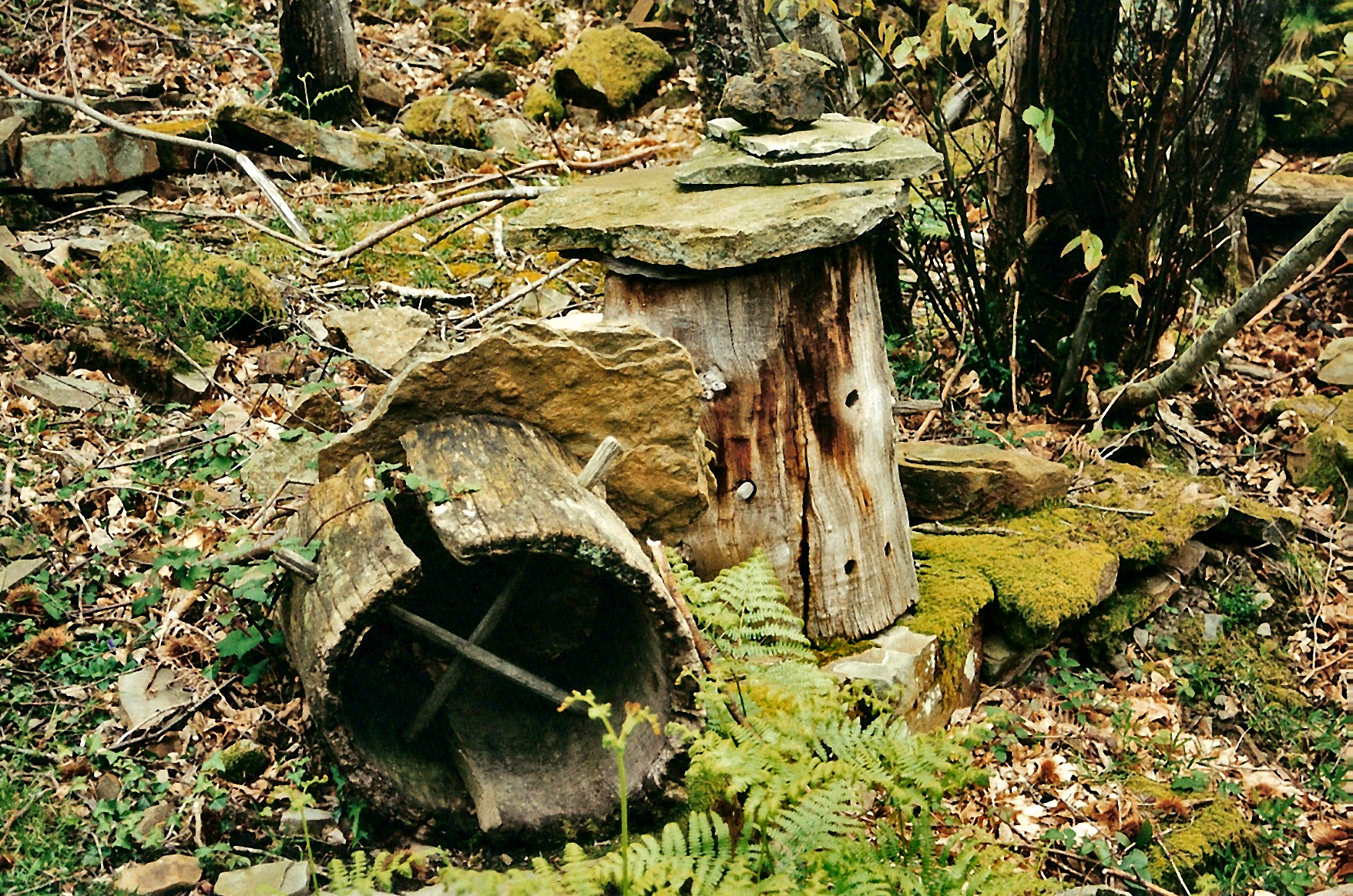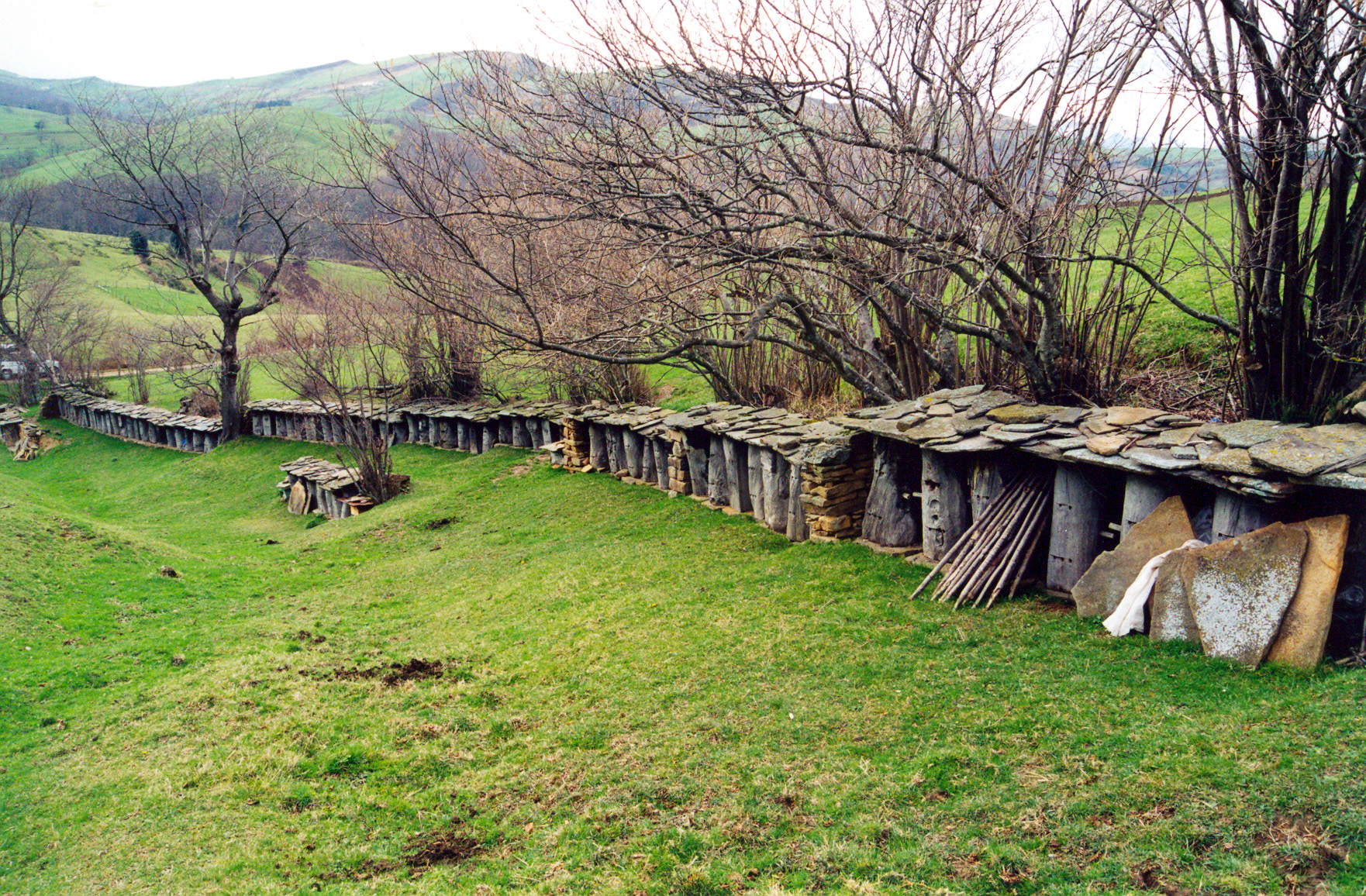Archives

Bee on willow catkin. Sergio González Ahedo.
Years ago beehives were kept on most farms. Honeybees were highly respected, appreciated and loved for their honey and wax.
So much so that whoever got rid of a swarm of bees would have an arm amputated, as older folk from the Valley of Carranza (Bizkaia) used to say. This ancient thought still lives in the memory of our elders, who thus would never destroy a hive. A similar belief that bee and honey thieves were punished by removal of their right arms entered the folklore of some localities in Álava. (more…)
The log hive, known locally as cepo, has since time immemorial and until barely a few decades ago been the ideal place to site a bee colony for beekeeping in Valley of Carranza apiaries. Fixed in a vertical position, as tradition dictates, this type of hive consisted of a dead or hollowed-out tree trunk on whose walls the bees were to build their honeycombs or tástanas. Sometimes the hive was built with timbers to solve shortage of tree logs. (more…)

Old chestnut log hives. Miguel Sabino Díaz.
In Carranza, up in the mountains of Ordunte, a spot known as Los Cepos Vinagre —The Vinegar Hives— in lands under Pando Council jurisdiction houses the remains of an ancient apiary, a real treasured asset of the local ethnographic heritage. (more…)


